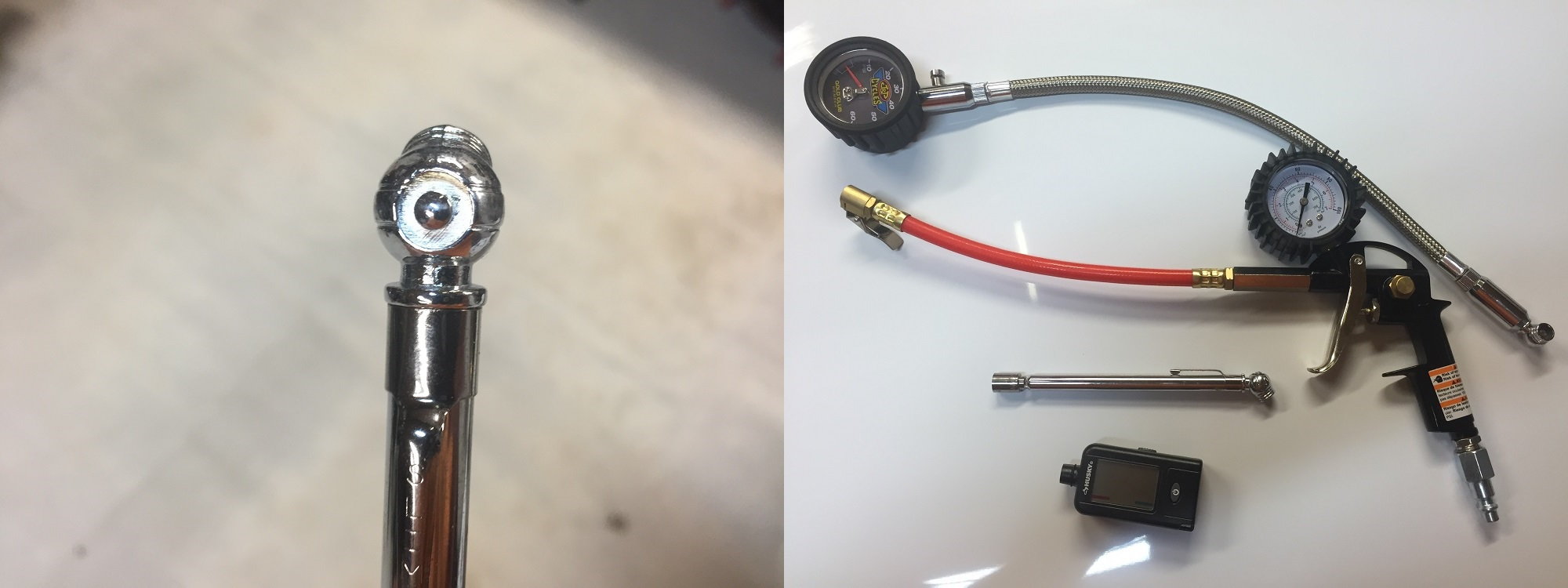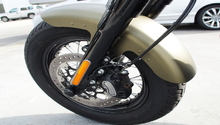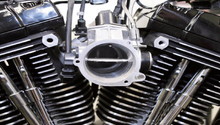Harley Davidson Softail: How to Check Tire Pressure
Although a very simple task, checking tire pressure is a very important task that should be exercised on a routine basis. Tire pressure is important for not only safety reason, but performance and economical reasons as well.
This article applies to the Harley Davidson Softail.
Tire pressure is essential, even paramount, to safe riding and operation of a motorcycle. Not only is proper tire pressure essential for safe operation, but it also improves gas mileage, performance, and prolongs the life of the tire. Proper tire pressure also helps with handling and helps make your ride a smooth one. Checking and maintaining proper air pressure should be routine, if not daily, aspect of every riders pre-ride check list.

Materials Needed
- Tire gauge
- Source of compressed air
Step 1 – Access the valve stem
The first thing you must do is align the wheels to a point where the valve stem is easily accessible, and you will be able to check the air pressure. This may involve rolling the motorcycle forward or backwards until the valve stem is at the lowest possible point possible, pointed up. Remember you may have to do this separately for the front and rear wheel. Make sure the motorcycle is level on a smooth and stable surface.

Pro Tip
Make sure the motorcycle is firmly on the kickstand and stable before you before you begin.
Step 2 – Determine correct tire pressure for tires
Before checking and adjusting tire pressure, you must know what the appropriate tire pressure is for your model motorcycle and tires. The two most common places to find this information is in your owner’s manual or on the tire itself. If you check both and there is a discrepancy, I would go with what is on the side of the tire.
Step 3 – Check the tire pressure
Now you will take your pressure gauge and actually check the pressure of your tires. For safe measure, I would check each tire several times for accuracy. Your valve stem should include a screw on cap; remove this and set it to the side so that you may put it in place after you have completed the task. Once you check the tires and read the gauge, you will make a determination as to whether the tire needs air added, has too much air, or is where it needs to be. Yes, in some cases you may have too much pressure.

Step 4 – Adjust the air pressure
After you have made the determination of what needs to be completed to maintain proper air pressure, you will need to make the proper adjustments. If the air pressure is low, you must use your source of compressed air to increase pressure. Make sure you do this in very small increments so as not to over-inflate the tire or damage it. Never apply air compressed air to the tire and leave it unattended. If the tire is over-inflated, there is a small tool on most gauges designed to release pressure. Again, you must apply this in very small increments as not to release too much pressure. Once you have achieved the proper pressure, make sure you replace the cap and you are ready to go.
Related Discussions
- Checking Tire Pressure - HDForums.com
- Checking Tire Pressures - HDForums.com







